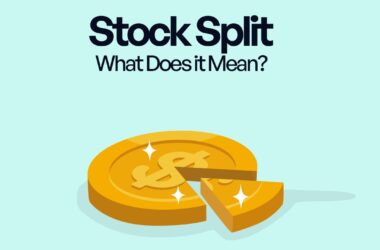When it comes to investing, the many choices can be confusing. You might be asking yourself, “Should I go after the next big opportunity, or should I stick with safe, reliable companies?” This is a common question for investors, and it usually comes down to deciding between growth investing and value investing.
I understand navigating the stock market can feel risky. You want your money to grow, but you don’t want to take unnecessary chances. That’s why it’s important to understand the difference between growth and value investing.
Knowing this will not only help you make smarter investment decisions but also ensure that your strategy matches your financial goals and comfort with risk.

What is Growth Investing?
Growth investing is an investment strategy that focuses on buying stocks of companies that are expected to grow at an above-average rate compared to other companies. Therefore, as a growth investor, you’re on the lookout for companies that have the potential to grow significantly faster than the market average. These are usually companies that are innovating, expanding rapidly, or operating in emerging industries.
However, growth investing isn’t without its risks. Because you’re investing in companies with high potential but also high uncertainty, the stocks can be more volatile. A promising startup might seem like the next Apple, but if it fails to deliver on its promises, the stock could go down, taking your investment with it.
One key aspect of growth investing is that it often involves buying stocks that are priced higher than traditional metrics like price-to-earnings (P/E) ratios might suggest. These stocks might look expensive, but growth investors are willing to pay a premium for the potential future earnings they anticipate.
What is Value Investing?
Value investing is an investment strategy that involves selecting stocks that appear to be undervalued by the market—these are companies that are trading for less than their intrinsic value.
Warren Buffett, one of the most successful investors of all time, is known for his value investing approach. He looks for strong companies with good fundamentals that are temporarily undervalued due to market overreactions or short-term challenges. By buying these stocks at a discount, value investors aim to profit when the market eventually recognizes the company’s true worth and the stock price rises.
Value stock investing is generally considered less risky than growth investing because you’re buying stocks that are already established and have a track record. However, it requires patience. You might have to wait for the market to come around and recognize the stock’s true value, which could take time.
Growth vs. Value: The Key Differences
Growth Investing: Think of an electric vehicle company that’s just starting to disrupt the market. Their potential is huge, but the path is unpredictable; news, tech breakthroughs, or even a failed product launch can swing the stock dramatically.
Value Investing: Now imagine a well-known bank or a global consumer goods company that’s temporarily undervalued because of short-term market jitters. They’re established, with solid fundamentals, and their stock price is likely to rise steadily once the market recognizes their true worth.
So, what sets these two strategies apart?
| Criteria | Growth Investing | Value Investing |
| Investment Goals | Focuses on capital appreciation. Expects stock to grow rapidly and increase in value over time. | Focuses on capital preservation and steady returns. |
| Risk and Volatility | Typically more volatile. Growth stocks, often in high-growth industries like tech or biotech, can experience significant price swings based on news, earnings, or market trends. | Generally more stable. Value stocks are usually well-established companies with solid fundamentals and are less sensitive to market hype. |
| Investment Horizon | Often associated with a longer time horizon. Investors need to be willing to hold through periods of volatility for future growth. | Can be long-term but focuses on achieving gains as the market corrects itself and recognizes the stock’s true value. |
| Return on Investment | Can offer higher returns if the company grows as expected, but with a greater potential for loss if expectations are not met. | May offer more modest returns but is generally considered safer with a lower risk of significant loss. |
Which Strategy is Right for You?
Deciding between growth and value investing isn’t just about choosing one over the other—it’s about finding the right balance based on your personal goals, risk tolerance, and investment horizon.
If you’re an aggressive investor with a higher risk tolerance and a longer time horizon, growth investing might be more appealing. You’re willing to take on more volatility in exchange for the possibility of higher returns. If you’re a conservative investor who prefers stability and is more concerned about preserving capital, value investing could be the better option.
You’re looking for steady, reliable returns and are willing to wait for the market to recognize the true value of your investments.
But here’s the thing—you don’t have to choose just one. Many investors find success by blending both strategies in their portfolios. For example, you might allocate a portion of your portfolio to high-growth tech stocks while also holding some undervalued blue-chip stocks. This approach allows you to benefit from the potential upside of growth investing while also enjoying the stability that value stocks can provide.
Common Misconceptions of Growth and Value Investing
It’s also important to address some common misconceptions about growth and value investing.
Growth stocks are only for the young. While it’s true that younger investors might be more inclined to take on the risks associated with growth stocks, these investments can be suitable for anyone with the right risk tolerance and investment horizon. Even if you’re closer to retirement, having a portion of your portfolio in growth stocks can provide the potential for higher returns.
Value stocks are boring and won’t deliver significant returns. This isn’t necessarily true. While value stocks might not experience the same rapid growth as their high-flying counterparts, they can still offer substantial returns, especially if the market has significantly undervalued them.

Read Also: Penny Stocks vs Blue-chip Stocks
Conclusion
Choosing between growth investing or value investing depends on your financial goals, your risk tolerance, and your investment horizon. Both strategies have their strengths and weaknesses, and understanding these can help you make informed decisions that align with your personal situation.
Remember, the key to successful investing isn’t just about choosing the right stocks; it’s about choosing the right strategy that fits your unique needs. Whether you’re aiming for the high returns of growth stocks or the steady gains of value stocks, the most important thing is to stay informed and stick to your plan.




